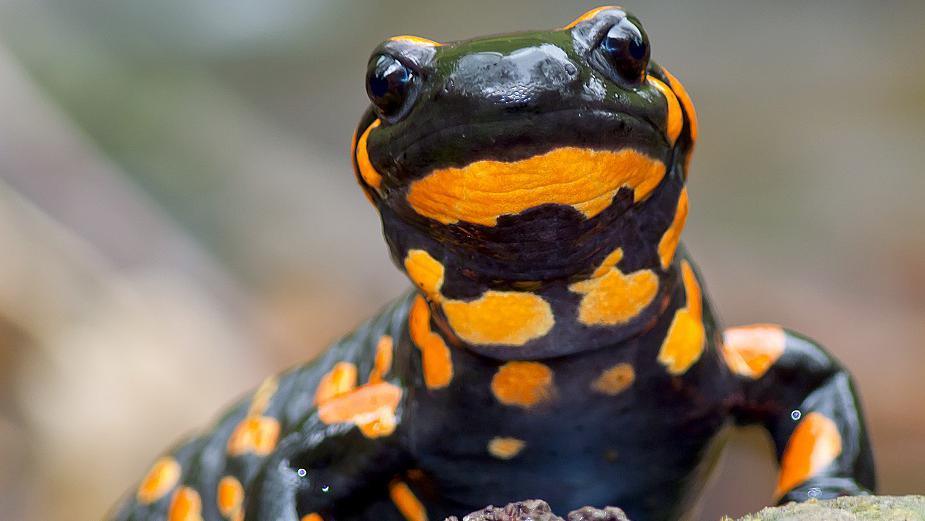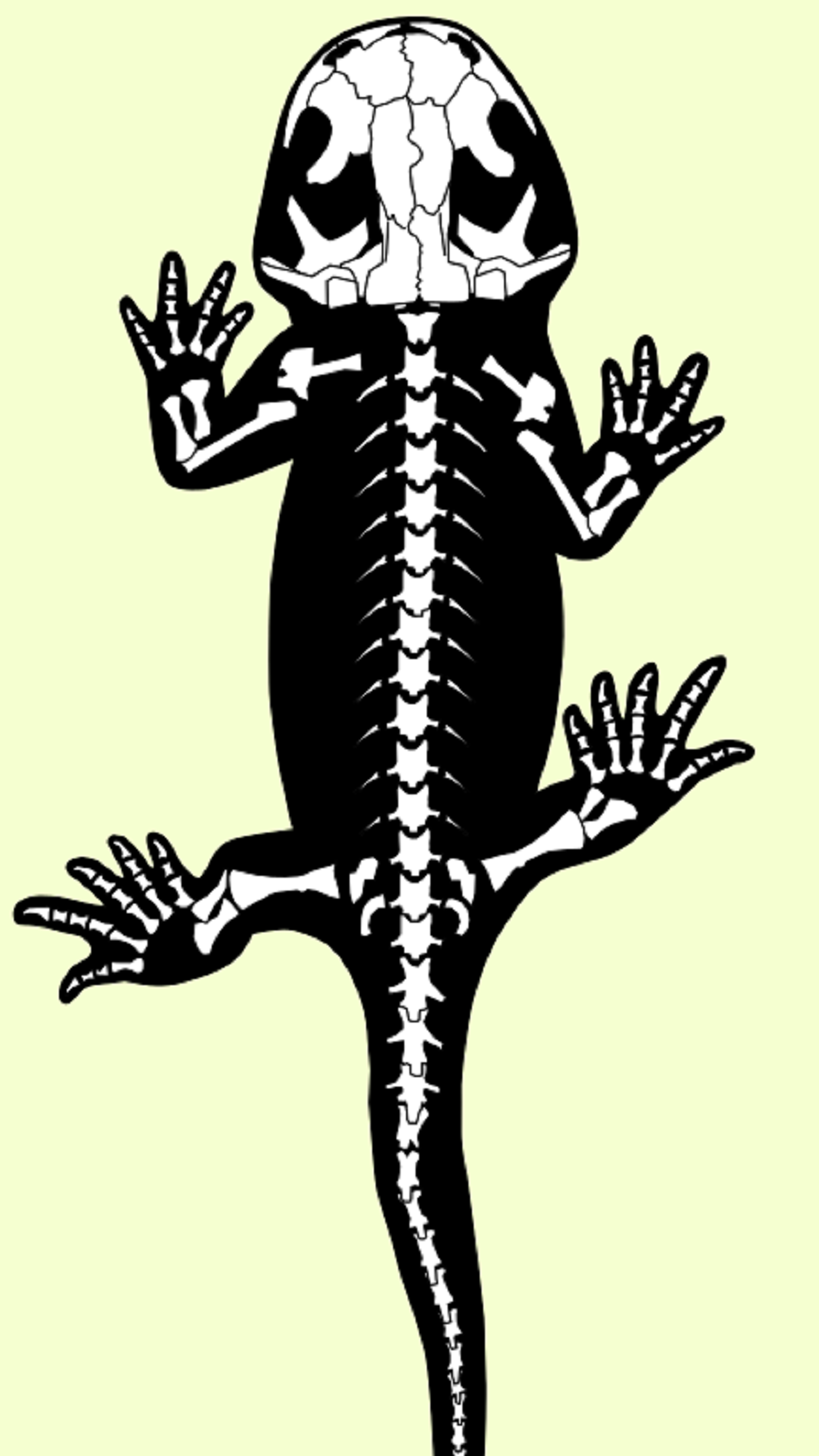Skye salamander fossils are some of world's oldest

Salamanders are a type of amphibian
At a glance
Fossils from Skye are of some of the world's oldest salamanders, say experts
Researchers analysed 166-million-year-old fossils of a type of animal called Marmorerpeton
They found it has several key salamander traits
The new Scottish material also represents a new species - Marmorerpeton wakei
- Published
Fossils discovered in Scotland represent some of the world’s oldest salamanders, according to a new study.
Researchers led by London university UCL analysed 166-million-year-old fossils of a type of animal called Marmorerpeton, found in Middle Jurassic rocks on Skye.
They found it has several key salamander traits, but was not part of the modern group of salamanders.
Their results are reported in Proceedings of the National Academy of Sciences, external.
The specimen is believed to be the oldest salamander fossil found in Europe.

An illustration of the Skye salamander
Marmorerpeton was first described 30 years ago, but only a few isolated fossil vertebrae and partial jaw bones were found.
The new Scottish material also represents a new species - Marmorerpeton wakei, named after the late Prof David Wake, a leading American authority on salamander evolution.
Dr Marc Jones, of UCL, said: “The fossil is definitely a salamander, but unlike anything alive today.
"It highlights the importance of the fossil record for preserving combinations of anatomical features that do not exist in any living animal.”
Salamanders, which include newts, are a type of amphibian. They are renowned for their ability to regrow limbs and organs.
The new Scottish fossil salamander had a wide, shallow frog-like head but powerful jaws and distinctive, prominent projections behind the eyes.
Skye is rich in fossils from the Middle Jurassic.
Previous finds have included the world's largest Jurassic pterosaur - a 170-million-year-old winged reptile.
PhD student Amelia Penny spotted its sharp-toothed jaw in a layer of ancient limestone on the island's coast.
In 2020, researchers discovered a new dinosaur "stomping ground".
They found dozens of fossil footprints on Skye which expanded the list of dinosaurs known to have lived in the area.
Related topics
- Published22 February 2022

- Published11 March 2020
